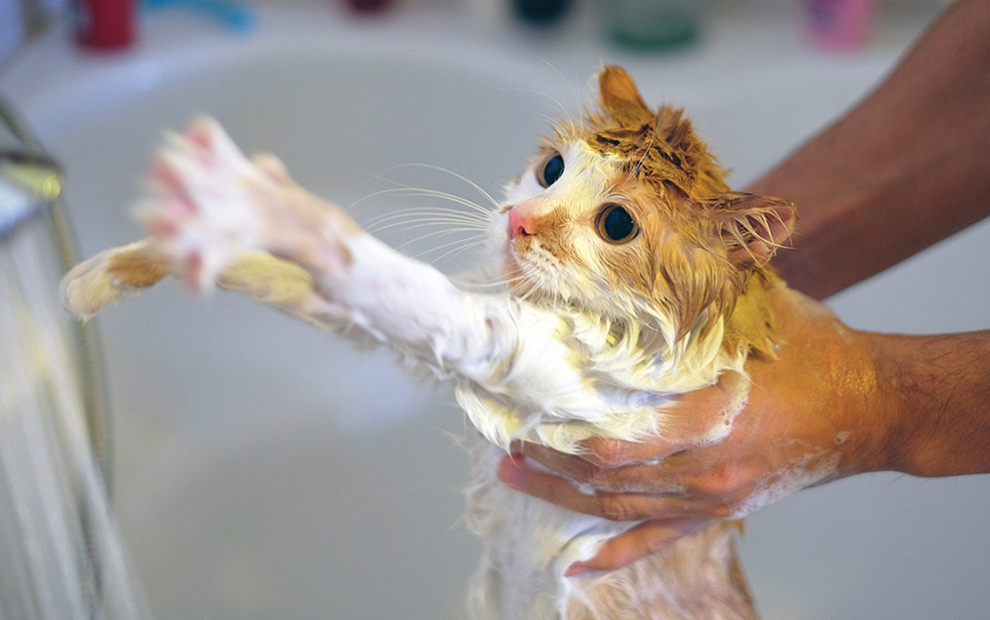Most cats don’t need a bath often, but when they do, it can be a daunting enterprise for both of you. These tips may help you and your cat get through the experience with minimal trauma.
- Choose a time when your cat is in a good mood. Ideally, your cat should be happy and calm when you are going to give her a bath. This will make her more tolerant and less likely to scratch or otherwise maim you. Some good options are after a meal or after a rousing play session when she is a little tired. Timing the bath to your cat’s mood may not be possible depending on the reason that she needs to be bathed (for example, if she got something toxic on her fur that must be removed immediately).
- Use warm water. Warm water is less shocking and more comfortable for your cat, especially if you need to do some serious scrubbing. The water should be comfortable for your hand. Many cats tolerate having water gently poured or sprayed over them (such as with a shower head or sink spray attachment) better than being placed in a tub full of water.
- Use cat-safe shampoo and avoid the eyes. Cat skin and hair is not the same as human skin and hair, so choose a shampoo intended for use in cats. This will help to prevent her skin from getting too dried out after the bath. Even with cat-safe shampoo, keep the suds away from your cat’s delicate eyes.
- Try an elevated bathing area. Bathing your cat in a sink or raised tub can be easier than leaning over her in the tub. For one thing, an elevated work surface is easier on your back. It also gives you better leverage and stability than kneeling on the wet bathroom floor if your feline friend objects to being cleaned. Your cat may feel safer in a raised bath spot—many cats choose to play and nap in sinks because they are like hidey-holes—whereas a tub may feel too exposed and vulnerable.
- Towels and leashes are your friends. Some cats freeze in horror when given a bath, allowing you to do what you need to do quickly. Others genuinely enjoy the attention and playing in water. For the rest, some gentle restraint will be needed to keep your cat in place while you suds her up and then rinse her off. For fractious cats, a towel is a great way to wrap her up and control her paws and sharp claws (just have a dry towel on the side for when the bath is over!). Leashes can be useful as a second line of restraint if your kitty tends to bolt or slash. If you have a helper, have him or her gently hold your cat’s head and front end as you start the bath while also keeping hold on the leash. If working by yourself, have the end of the leash looped over one hand so you can quickly reel your kitty in if she tries to make a run for it.




